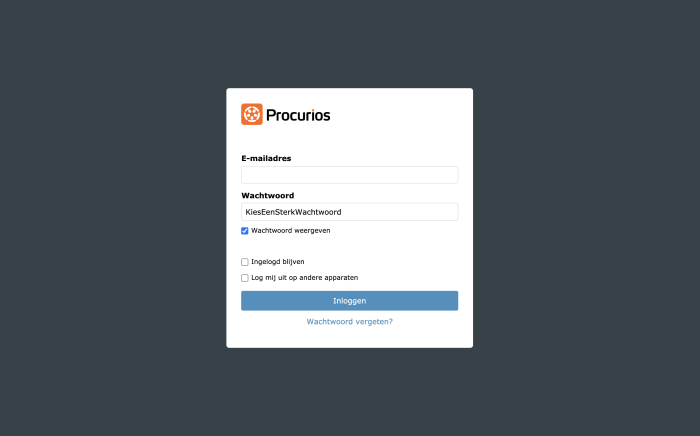
Release 2021.06
In the course of Wednesday May 26th 2021, every customer on the production version of our Platform, will use release 2021.06. You can find an overview of the changes in this blog. For more information on the different versions of our platform, take a look at the release page.
Platform: issue certificates to relations
From now on it is possible to issue different types of certificates to relations in your system. A certificate type can have a validity period, after which it automatically expires, or it can remain valid indefinitely. It is possible to send an email notification to relations whose certificate is about to expire.
In addition, a certificate can be downloadable. To use this option, you must upload a mail-merge document with the certificate type. When issuing the certificate, you can then specify values for all tokens in the certificate template. After doing this, these values are entered in the template when you download the certificate.
You can display certificates on (and download from) the relation card. There is also a snippet called 'my certificates' that you can use to display the certificates of a logged in user on a website.
By default, as a user with rights to this module, you can manually issue certificates to a relation via the 'Certificates' option in the CRM.
A list of all issued certificates is also available there. Additionally, there are search options available via the CRM to search for relations with a certain certificate or certificates with a certain validity.
Note: you will need the help of one of our consultants to implement this functionality.
Meetings & Events: issuing certificates after a meeting
Besides issuing certificates manually, a certificate can also be issued automatically. This is now possible for participants of a meeting. For each meeting a certificate can be selected that participants can receive. If you set a certificate here, a new button becomes available on the participant page as soon as the meeting has ended. Here you can select which participants should receive the certificate and then issue all these certificates at once.
When it is possible to download a certificate and a template is linked to it, it is also necessary to configure how the tokens on the certificate should be filled in. For this a new settings page has been created in the meetings module. Through this settings page you can define per token how it should be filled in. There are options to use standard certificate information (such as the holder of the certificate or the issue date), to use some standard properties of the meeting (such as the name or the locations) or to create a new setting for the meeting. When the last option has been chosen, every meeting that issues that type of certificate will have an additional setting to fill in what should be on the certificate.
Note: you will need the help of one of our consultants to implement this functionality.
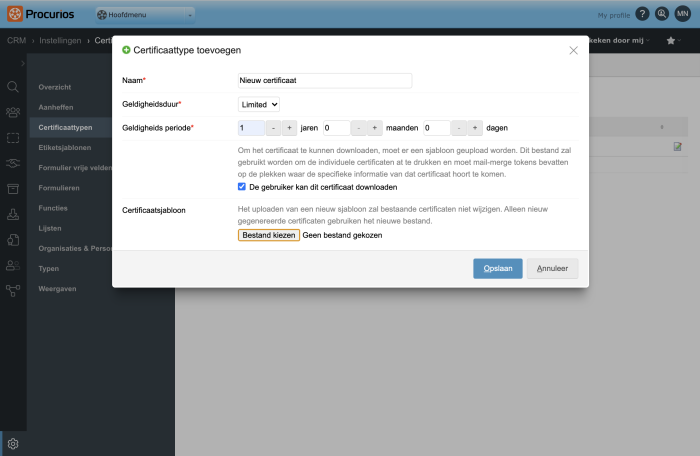
Meetings & Events: templates
Meetings in our Meetings & Events product are full of options. Therefore it is generally adviced to copy a meeting instead of creating a new blank one. In this case, 'templates' are often created. This had a number of limitations that are no longer an issue.
Templates
Templates have now been given an official status and place within Meetings & Events. When creating a new meeting you now have the option to create a meeting based on a template or a blank meeting. In the Meetings & Events settings there is a new page where these templates can be managed and edited.
You can create a new template by making a new template from an existing meeting or template. The meeting is then copied and gets the status 'template'. So you never lose the original meeting.
This improvement means that the copy and delete options are no longer part of the meetings overview. These possibilities are present on the details page of the meeting, where the possibility to create a template has also been added.
Who can do what?
By default everyone who is allowed to create a meeting can also create a template, but this can be further restricted with privileges. Everyone who is allowed to create a meeting, can now do so based on a template. Of course department privileges have been taken into account to limit who can see which templates.
Existing 'templates' will not automatically be converted into real templates. Meeting organizers can therefore choose to work with the new templates functionality and have to convert it manually.
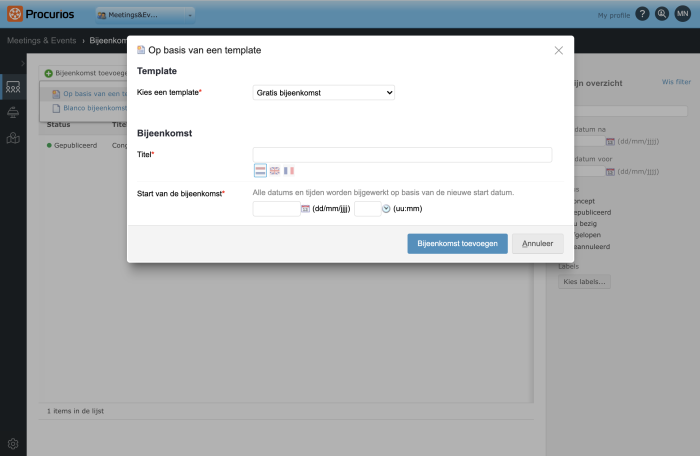
Meetings & Events: materials page for meetings
You could already define the viewers of the materials page on your websie. From now on there is an additional option, namely for everyone who was present.
This means that the participant must have his attendance marked as 'yes', in order to see the page.
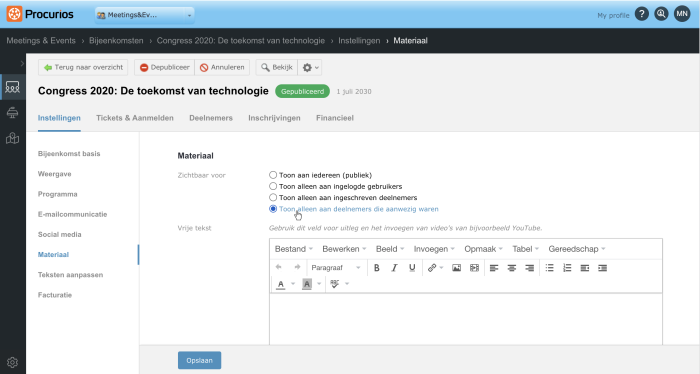
CRM: empty option in selection box by default
This change applies to all free fields and is therefore reflected in, for example, Forms (Survey) and the settings of forms in the CRM.
In a select box (one of more with a menu) the first option is always already filled in. Sometimes you want a user to look at all the options. That is now possible by checking the box 'Add empty first option; this ensures that the user has to make a deliberate choice'. You can also specify a title for this option.
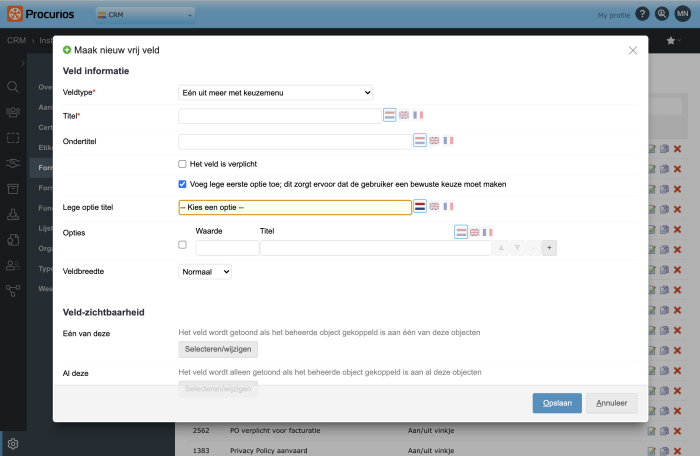
CRM: a neater way to set up free fields
If you have already read the information about the select box, you might have noticed something in the screenshot. The form to set up a free field has been modified. Nothing has been removed, but a lot has been moved around. The options for the field type are the most important and are now entered first. Other options are conveniently placed under 'advanced'.
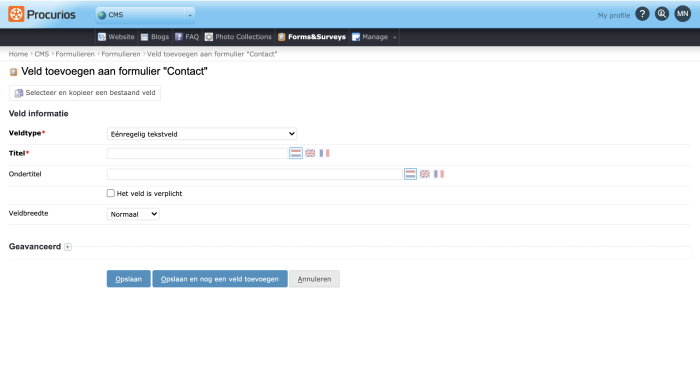
CRM: manage relationships using a function in the frontend
Those who use the new item "Manage relations via a function" in their site, offer logged in relations the possibility to see an overview of all relations that are linked to themselves via a configured function.
This allows users to manage their own introductions/children/employees/council members etcetera, without needing access to the backend (and appropriate settings).
Through this list it is also possible to add relationships and to archive existing relationships. A relation that is added, also automatically gets the set function at the logged in user. When a relation is archived, only the function is cancelled. The relation remains in the CRM.
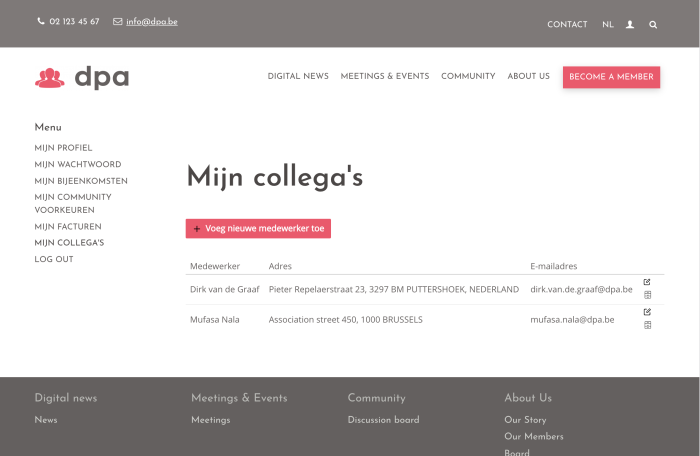
CRM: Overwriting selections
From now on you can overwrite a selection when making a selection from a search in the CRM.
The default suggestion is to create a new selection, but if you have clicked on the structure of an existing selection and then on the corresponding query (and after having modified the query for instance), you will get the suggestion to overwrite the selection in question. You can always choose a selection to overwrite. You can only choose selections which you would be allowed to edit yourself.
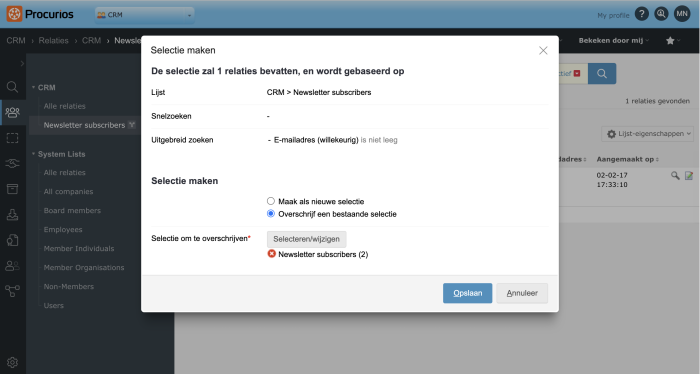
Memberships & Organisations: importing exception memberships
In the memberships and organisations module in the members product it is possible to set up exceptional memberships in case a member does not meet the rules of a body but should still be considered a member of that body.
Platform: look and feel login panel backend
As of today, the option to display your password has been added. This is very useful to be able to see if you have typed your password correctly. This was already possible in the process of choosing a new password, but it is now possible at all times (it is not a setting that you can turn on/off).
